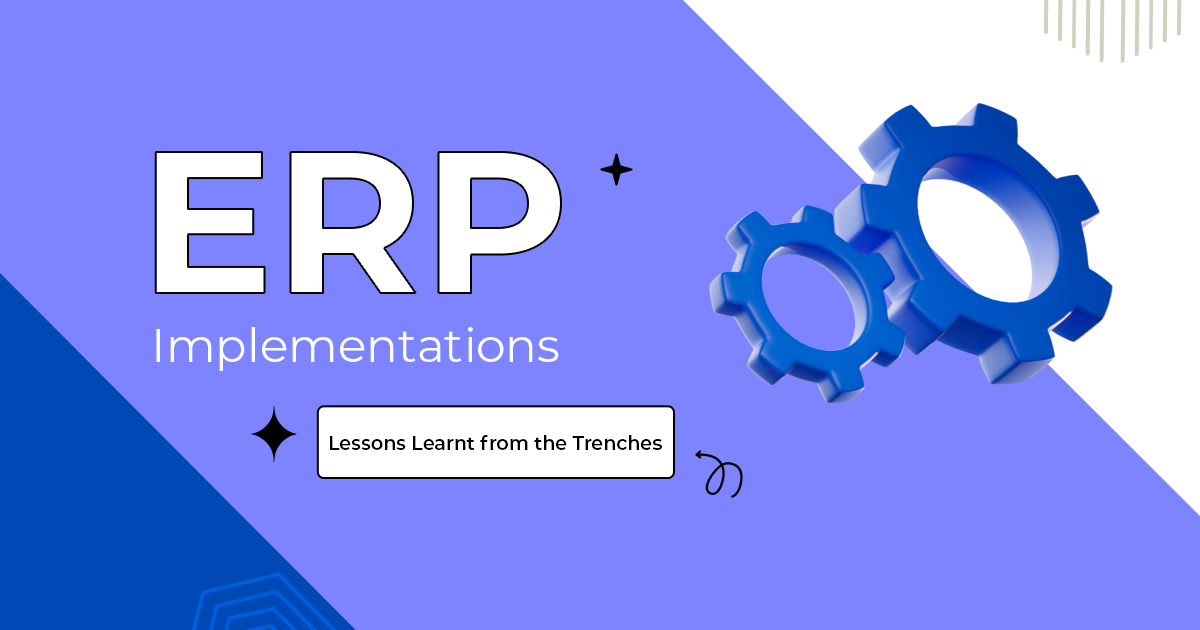ERP Implementations: Lessons Learnt from the Trenches
June 12, 2025 12:06 pm | by Jyotsana | Posted in ERP
The success of an ERP Implementation doesn’t lie in just flipping the switch, it actually lies in how one navigates the post-go-live phase, especially when working with legacy systems which have their tales to narrate about the implementations.
With legacy systems to replace, there are decades of customizations to explore if a company wants to be flexible, or there is a standing rule to offer what it has and mould the operations around them.
Being in the IT sector and now heading Sarvika Technologies as VP of Client Solutions, I have had the opportunity to spearhead ERP implementations numerous times across various industries and geographies, and the experience has been nothing short of a rollercoaster.
While some succeeded like a hot knife through butter others reminded us that nothing comes on a silver platter.
While navigating through the labyrinth, I’ve compiled a set of frameworks that have proven to be the secret behind our success.
So here’s my tried and tested checklist-
Expect the Unexpected- And Engineer for It
Every ERP plan looks well on track on paper, but when real-world data starts integrating with the CRM, inventory systems, and finance modules, no matter how meticulous and precise your planning is, things can go off track in the blink of an eye.
Designing buffer time into our project timelines for integration regression testing, especially when using APIs to connect with legacy tools or 3rd-party logistics software, has been a constant practice from our side.
Post-Launch Analysis- Stability is the Key
Flipping the switch isn’t just enough- the stability of the system post-launch is essential. Some of the Key Indicators could be:
- Is it responsive when traffic peaks?
- Are data flows stable across departments?
- Are users following workflows, or creating workarounds?
This analysis provides us with an overview of the system’s performance over the evolving needs of the consumers.
Consumer Feedback- Your Guiding Light
One undeniable fact is that no one understands the system better than those who use it every day. We’ve considered the user feedback as a guiding light and have made it our top priority.
Implementing session tracking and using tools like Hotjar (for web interfaces) or Power BI dashboards have been some of the steps from our side to visualize user behavior and identify friction zones.
Navigating Post-Implementation Challenges with an Iterative Approach
Challenges are a part of any ongoing process, whether it is technical or behavioral. Technical bugs could still be managed, the real challenge lies in behavioral inertia– the resistance to change.
Our POV in addressing the issue– Adopting an Iterative approach and identifying the root cause of the problem and reaching a conclusion.
System Upgrades– A Necessity Rather than a Luxury
Tech is rapidly evolving, and so should your ERP. Platforms such as Microsoft Dynamics, SAP S/4HANA, AWS, Oracle NetSuite) roll out quarterly upgrades and our past experiences have made us realise that missing any of these could be fatal for the customizations and APIs.
Scheduling quarterly regression tests and managing system dependencies using in-house CI/CD pipelines has come to our rescue.
KPIs– An Infallible Metric for Computing Success
Flipping the switch isn’t just enough; tracking whether the system is delivering the value it’s supposed to holds sway. This performance tracking could easily be done through KPIs.
Every organisation has its unique KPIs based upon its objectives. The ones that hold the key to us are-
- 1.Workflow adherence rates (Are users bypassing steps?)
- 2.Exception queue resolution time (Are automated jobs failing silently?)
- 3.nventory accuracy variance post-implementation (This one is a killer metric in retail and manufacturing ERP systems)
- 4. Adoption metrics (through login heatmaps + module usage analytics)
- 1. The first “zero-error” financial close
- 2. The first month with 100% purchase order automation
- 3. A quarter where inventory discrepancy dropped by 85%
Constant Enhancement– The sole path of staying germane
The success of an ERP Implementation isn’t just a one-time affair. It demands continuous evolution, an iterative approach, and a hunger for the best.
In our attempt to stay germane, we’ve embedded backlog grooming fortnightly for post-launch tickets and enhancement requests. More than bug fixes, this is an approach to improving user productivity and streamlining inter-module data flow.
Celebrating the Realistic Milestones
Identifying and appreciating the efforts is as important as any other aspects of the ERP Implementations. But for us, it is beyond go-live parties now, our celebrations begin when we achieve-
That’s when we know we made an impact.
Final Words
Achieving a successful ERP implementation isn’t just about a seamless launch, it’s about people, persistence and the ability to navigate challenges and identify opportunities.The launch is not the end, it’s the beginning of an entirely new journey and successful implementations are those that keep adapting, scaling and delivering after the go-live.
And at the end if you stay honest to your process, your people, and your principles — the ERP system won’t just function. It will evolve.
Written by Jyotsana
Vice President - Client Solutions
Jyotsana has a wide experience in customer relations in the software industry. She completed her MSc in Business Administration from the University of Amsterdam in year 2018. When not being a super awesome manager, Jyotsana likes to mentor hearing and/or vocally impaired children in a public school in the city. She believes in being kind. Her forever-passion: #saveearth
